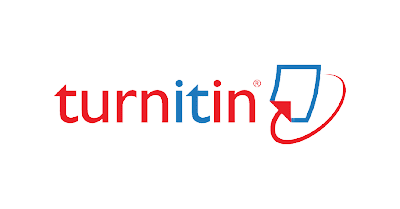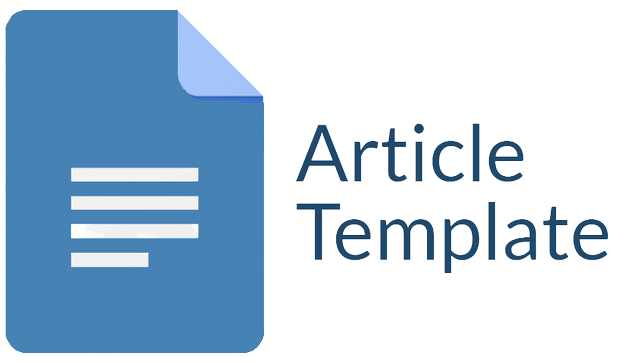AKULTURASI BUDAYA PADA ARSITEKTUR BANGUNAN DI PALEMBANG
Abstract
The existence of different cultures gives birth to different architectural styles. When two or more cultures meet, cultural acculturation occurs in the architecture of the building, or in several architectural elements, or in the entire building. Acculturation is a social process that arises when a group of people from a culture combines elements of a foreign culture, so that they can be accepted and processed into their own culture without causing a loss of their original cultural personality.One area in Indonesia that can be said to have a long history and culture is the city of Palembang. Palembang was famous from the time of the Sriwijaya Kingdom to the Palembang Darussalam Sultanate and was synonymous with a business economy that used sea routes. It is not surprising that the creation of cultural acculturation is a natural thing.Examples of the historical heritage of the city of Palembang which experienced acculturation or architectural mixing can be seen from houses of worship and residential buildings, namely the Palembang Grand Mosque (Sultan Mahmud Badaruddin Jayo Wikramo Grand Mosque), the Cheng Ho Mosque (Al Islam Muhammad Cheng Hoo Mosque Sriwijaya Palembang), and the House Limas (traditional house of South Sumatra). The method used in this research is a qualitative method with a descriptive approach using library research.
Keywords : acculturation, culture, architecture, Palembang
Downloads
References
Anggraeni, D. W., & Mustika, S. W. A. (2018). Bentukan Massa Dan Arsitektur Pada Rumah Lima palembang Hasyim Ning Dengan Pendekatan Akulturasi. Jurnal Arsitektur KOMPOSISI.12(1), 1.
Arviansyah, Reza. (2020). Perpaduan Peninggalan Bentuk Akulturasi Arsitektur di Palembang, Kalpataru. Vol.6 No.2
Burhanudin, Jajat., (2014). Peradaban Islam Melayu. Studia Islamika, vol.5 no.1.
Darmawan, Chandra. (2021). Warisan Monumental Peninggalan Kesultanan Palembang Darussalam Yang Terakulturasi. Yonetim, Vol.1 No.1 Juni 2021.
Haryono, Timbul.(2003). Catatan kuliah Arkeologi, yang disampaikan pada perkuliahan Arkeologi Seni,di Universitas Gadjah Mada Yogyakarta, Tahun 2003.
Heldani, Sri Hastuti, (2015). Makna Simbolik Ornamen Masjid Al Islam Muhammad Cheng Ho Palembang. Vol. 13 No. 2
Hikmawati. 2017. Pengaruh Budaya Organisasi Terhadap Kualitas Pelayanan Publik di Sekretariat Daerah Kabupaten Gowa. Skripsi. Makassar: Universitas Negeri Makassar.
Lubis, dkk. (2003). Masjid Agung (Sebuah Persembahan Kepada Masyarakat Sumsel), Palembang: Yayasan Masjid Agung Palembang, 2003.
Muasmara, R., & Ajmain, N. (2020). Akulturasi Islam dan Budaya Nusantara. TANJAK : Jurnal Pendidikan dan Pengajaran , Vol. 1 No. 2.
Malik, Abdul. (2012). Arsitektur Tradisional Melayu Kepulauan Riau, Tanjung Pinang:Universitas Maritim Raja Ali Haji
J.M. Sri Narhadi. 2019. Kajian Bentuk, Fasad, dan Ruang dalam pada Masjid Cheng Ho Palembang. Jurnal Arsitektur Zonasi.Volume 2 Nomor 3.
Novrianty Nasution, Irma dkk.(2016) Membaca Tanda Melalui Sintesa Akulturasi Pada Arsitektur Tradisional Limas Palembang. Universitas Negeri Medan. Seminar Nasional Jelajah Arsitektur Tradisional 2016 di Makassar. Balai Litbang Perumahan Wilayah III Makassar.
Pulungan, Suyuthi. (2017). Sejarah Peradaban Islam. Jakarta: Amzah.
Pratama, Yudi.(2019). Rumah Limas: Refleksi Sejarah Akulturasi Kebudayaan Masyarakat Sumatera Selatan. JHCJ-Jambura History And Culture Journal. Volume 1 Issue 1, Januari 2019.
Sari Kartika, Reni.(2015). Rumah Limas Palembang “Warisan Budaya Yang Hampir Punah”. Universitas Muhammadiyah Palembang. Vol.5 No.2, September 2015.
Susandi, Alvin. (2010). Akulturasi Budaya Pada Arsitektur Masjid Agung. Palembang. Skripsi. Yogyakarta: Universitas Negeri Islam Yogyakarta.
Syahbani Reza, Sahrul, & Efendi.,(2022).Makna Ornamen Masjid Al-Islam Muhammad Cheng Ho Palembang: Jurnal Pendidikan Seni & Seni Budaya, Vol 7 No 1.
Copyright (c) 2024 Adesta Syafitri

This work is licensed under a Creative Commons Attribution-ShareAlike 4.0 International License.
Jurnal allows anyone to compose, correct, and do derivative works, even for commercial purposes, as long as they credit for the original work. This license is the freest. It is recommended for maximum distribution and use of licensed material.
The submitted paper is assumed not to contain any proprietary materials that are not protected by patent rights or patent applications; The responsibility for technical content and protection of proprietary materials rests with the authors and their organizations and not the responsibility of journal or its editorial staff. The primary (first/appropriate) author is responsible for ensuring that the article has been viewed and approved by all other authors. The author's responsibility is to obtain all necessary copyright waivers to use any copyrighted material in the manuscript before submission.
Jurnal Pendidikan, Sains dan Teknologi allows the author(s) to hold the copyright without restrictions and allow the author(s) to retain publishing rights without restrictions. Jurnal Pendidikan, Sains dan Teknologi CC-BY-SA or an equivalent license as the optimal license for the publication, distribution, use, and reuse of scholarly work. Jurnal Pendidikan, Sains dan Teknologi allows the author(s) to hold the copyright without restrictions and allow the author(s) to retain publishing rights without restrictions. Jurnal Pendidikan, Sains dan Teknologi CC-BY-SA or an equivalent license as the optimal license for the publication, distribution, use, and reuse of scholarly work.
In developing strategy and setting priorities Jurnal Pendidikan, Sains dan Teknologi recognize that free access is better than priced access, libre access is better than free access, and libre under CC-BY-SA or the equivalent is better than libre under more restrictive open licenses. We should achieve what we can when we can. We should not delay achieving free in order to achieve libre, and we should not stop with free when we can achieve libre.
Jurnal Pendidikan, Sains dan Teknologi is licensed under a Creative Commons Attribution-ShareAlike 4.0 International License.
You are free to:
- Share a copy and redistribute the material in any medium or format
- Adapt a remix, transform, and build upon the material for any purpose, even commercially.
- The licensor cannot revoke these freedoms as long as you follow the license terms.






